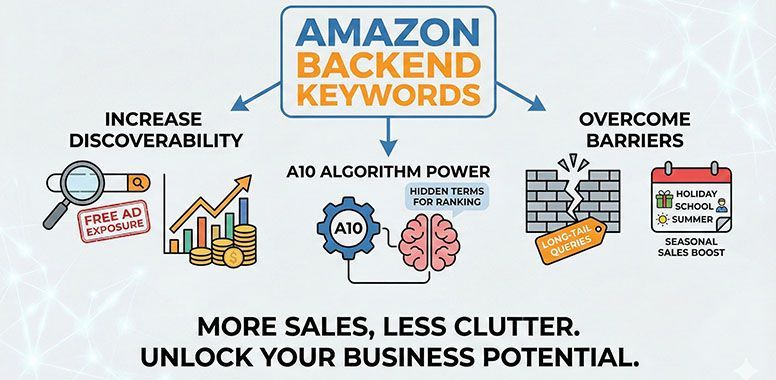Ignite Your Amazon Rankings: 6 Sets of Questions for High-Performance Keyword Research
Amazon keyword research plays a pivotal role in the success of your product listings on the platform. By strategically identifying and incorporating relevant keywords, you can significantly enhance the visibility of your products, attract more potential customers, and ultimately increase sales. Here's a comprehensive guide with questions you can ask yourself as you navigate through the process of conducting thorough Amazon keyword research:
Understand Your Product and Audience:
Start by understanding your product and its features, as well as your target audience. Identify key attributes, benefits, and use cases of your product.
Let’s use a Baby Toy Product as our sample product. Here are the possible questions you can ask:
- Features: Is the toy safe for teething babies? Is it waterproof? Made of wood?
- Product: Is the toy for babies only or also for toddlers? What is the size of the product?
- Key Attributes: Is the baby toy giftable? Is it washable? Type of Plastic?
- Benefits: Is the toy good for learning and cognition?
- Use: Is the product for bathtime only?
With a thorough understanding of this aspect of your product, you may then proceed to identifying the next step - the Seed Keywords.
Brainstorm Seed Keywords with Amazon Autocomplete
Make a list of seed keywords related to your product. These are general terms that describe your product and are relevant to your target audience.
Seed Keywords are usually composed of 2 or 1 words and are usually connected with other additional descriptive words that can form long-tailed keywords.
Ask yourself these questions when identifying your Seed Keywords:
- Is the product appropriate for this set of babies? (Example: Baby toys 1-3 months vs Baby toys 12 months+)
- Is the product gender specific?
- Is the toy made for certain educational models? Montessori, etc.
Use the Search Engine of Amazon to get the specific keywords they suggest as Seed Keywords for your product.
Once you choose one keyword out of these suggested keywords, you can then compare your keywords as they are used by the competitors in the search results.
Analyze Competitor Listings
Examine product listings of your competitors in the same category. Identify keywords they are using in titles, bullet points, and descriptions. Pay attention to high-performing listings.
For example, Baby-related keywords are essential to be included (and repeated) on the entire listing for baby-related products.
Questions you can ask while doing Competitor Research:
- Is there a common keyword denominator with similar and direct competitors for your product?
- Is the common keyword denominator not only repeated in the title but also in bullet points and A+ Content?
- Do they construct the title, bullets, and product description with keyword-rich copy?
Answering these questions helps lead you to the type of voice you wish to incorporate into your product copy and your branding.
Utilize Keyword Research Tools
Keyword research tools specific to Amazon, such as Helium 10, Jungle Scout, or AMZScout, help support and explore additional keyword opportunities. These tools provide insights into search volume, competitiveness, and related keywords.
Questions to ask while scouting for tools:
- What is the most valuable software that you can utilize for your varied keyword extracting needs?
- Does the software have online tutorials you can check out so you can decide better which one fits your preferences?
Expand Keyword List with Synonyms and Variations
Expand your keyword list by including synonyms, alternative spellings, and variations of your seed keywords. Consider different ways customers might search for your product.
Questions to ask:
- Does your product come in different color or size variations?
- Does the competitor include their variations only in the title for their copy?
- Were you able to extract variation translations on your tool?
Optimize Product Listing, Monitor Performance and Iterate
Incorporate selected keywords strategically into your product title, bullet points, product description, and backend search terms. Ensure that the keywords flow naturally and provide valuable information to customers.
Regularly monitor the performance of your product listings using Amazon's analytics tools or third-party software. Track keyword rankings, conversion rates, and overall sales. Adjust your keyword strategy based on performance data.
Questions to ask yourself while optimizing the Listing Copy:
- As a customer, what do you look at in each listing when purchasing items online?
- Did you incorporate the seed keywords in the title and secondary in the bullet points and description?
- Were you able to highlight the main features of your product in the bullet points, and at the same time use the keywords you got from the research?
By continually monitoring and following these steps, you can conduct effective keyword research for your Amazon product listings, improve visibility, and increase the chances of reaching your target audience.


